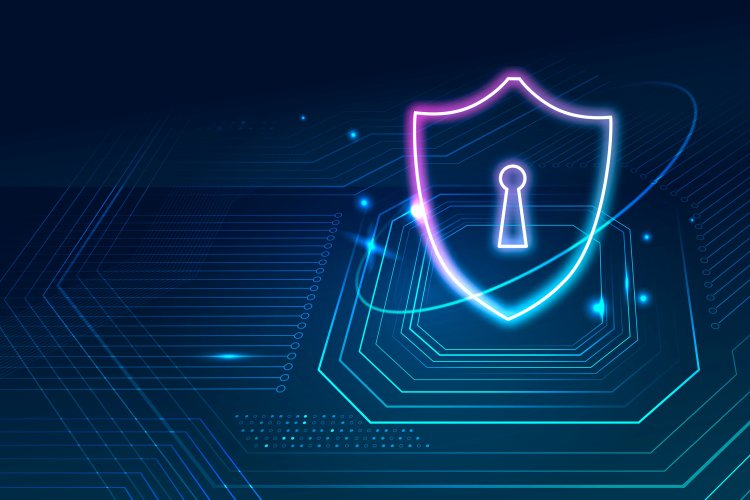Building a Privacy-First Culture in Tech-Driven Organizations
Create a strong privacy-first culture in your tech company. Learn simple ways to protect user data and build trust today. Start now.
Share this Post to earn Money ( Upto ₹100 per 1000 Views )

In the digital age, creating a privacy-first culture is not just a compliance need, but it is a strategic need as businesses increasingly depend on data-driven technologies. Integrating privacy into the operational DNA ensures compliance, trust, and brand equity. This end-to-end guide discusses the principles, practices, and tools needed to create a privacy-first culture in tech-savvy organizations.
Understanding Privacy-First Design
Privacy-first design is a movement in which privacy aspects are integrated into the development process as an integral part of it right from the start. Such forward-thinking approach implies that privacy is not an add-on but an integral part of product and service design.
Some of the fundamental principles of Privacy-First Design:
-
Proactive rather than Reactive: Proactively and prevent harm to privacy first.
-
Privacy as Default Setting: Protect personal information by default in all company practices or information technology systems.
-
Privacy Integrated into Design: Embed privacy in business design and IT systems.
-
Full Functionality: Provide both privacy and functionality with minimum trade-offs.
-
End-to-End Security: Guard data from original creation until ultimate disposal.
-
Visibility and Transparency: Transparently explain data practices and policies.
-
Respect for User Privacy: Maximize user interests by having robust privacy defaults and easy choices.
Implementing these principles requires a shift in organizational culture, emphasizing data ethics and user-centered design.
Integrating Privacy into Software Development
Software development with privacy means integrating privacy aspects into the software development life cycle (SDLC). This includes:
-
Requirement Analysis: Specify privacy requirements alongside functional requirements.
-
Design: Integrate privacy-enhancing technologies (PETs) and minimize data collection.
-
Implementation: Implement secure coding practices to ensure data integrity and confidentiality.
-
Testing: Conduct privacy impact assessments (PIAs) and regular audits.
-
Deployment and Maintenance: Constant compliance with privacy legislation and adapt to thwart new dangers.
Through embedding privacy in all steps, organizations can effectively combat possible threats and ensure data privacy compliance.
Data Privacy Compliance
Data privacy compliance is compliance with law and regulation regarding collection, use, and storage of personal data. Some regulations needed are:
-
General Data Protection Regulation (GDPR): Covers organizations handling personal data of EU citizens.
-
California Consumer Privacy Act (CCPA): Gives California residents rights to personal data.
-
Health Insurance Portability and Accountability Act (HIPAA): Protects sensitive patient health information in the U.S.
Compliance is the implementation of policies, procedures, and technologies to ensure data is processed sensibly. Data privacy compliance software can help make it easier by automatically performing the likes of data mapping, consent management, and reporting.
Implementing Privacy Automation
Privacy automation is the implementation of technology to effectively automate privacy tasks. Benefits include:
-
Efficiency: Automates labor-intensive manual work.
-
Accuracy: Eliminates human error while handling data.
-
Scalability: Supports growing levels of data and sophisticated regulatory compliance.
The merger of automated data privacy features, such as privacy compliance tools and consent management platforms, could assist an organization in being more compliance-focused in compliance management and protection of users data.
Deployment of Data Discovery and Lineage Tools
Data discovery technology allows organizations to find and classify data in systems and gain end-to-end visibility. Automated data lineage technology tracks data flow from source to destination, which makes it possible:
-
Transparency: Investigate how data is flowing through systems.
-
Accountability: Unravel accountability for working with data.
-
Compliance: Demonstrate compliance with data protection regulations.
Automated data lineage technology is a success enabler for data protection automation, allowing organizations to act responsibly on data and act fast in the event of privacy incidents.
Building a Privacy-First Organizational Culture
Building a culture of privacy is more than policies and tools; it is following common privacy principles. Plans are:
-
Leadership Involvement: Leaders must lead privacy initiatives and show compliant behavior.
-
Employee Education: Educate employees continually in privacy procedures and obligations.
-
Transparent Communication: Encourage open discussion of privacy concerns and suggestions.
-
Continuous Improvement: Ongoing review and enhance privacy processes to meet evolving challenges.
Through cultivating a culture where everyone is engaged in privacy, organizations are able to create trust and resilience.
GoTrust: Your Privacy Compliance Partner
GoTrust offers end-to-end solutions to empower organizations to cultivate a privacy-first culture. Our solutions are:
-
Privacy Automation Tools: Automate compliance work with our advanced automation technologies.
-
Consent Management Platform: Simplify user consents effortlessly and grant transparent visibility.
-
Data Discovery and Lineage Solutions: Achieve complete visibility of your data ecosystem.
-
GDPR Compliance Automation: Ensure GDPR compliance with our seasoned tools.
Unite with GoTrust in data privacy simplification and cultivating a culture of prioritization and user data protection.
Conclusion
Creating a culture of privacy in technology organizations is imperative for compliance, trust, and sustainable success. With the inclusion of privacy in design, the application of automation tools, and organizational commitment, organizations can excel at responding to the shifting data context responsibly and efficiently.

 Mohan
Mohan 












![Vitrafoxin [(Official™) Price 2025] Official Website Reviews!](https://blog.rackons.in/uploads/images/202506/image_380x226_6841205aec39b.jpg)

